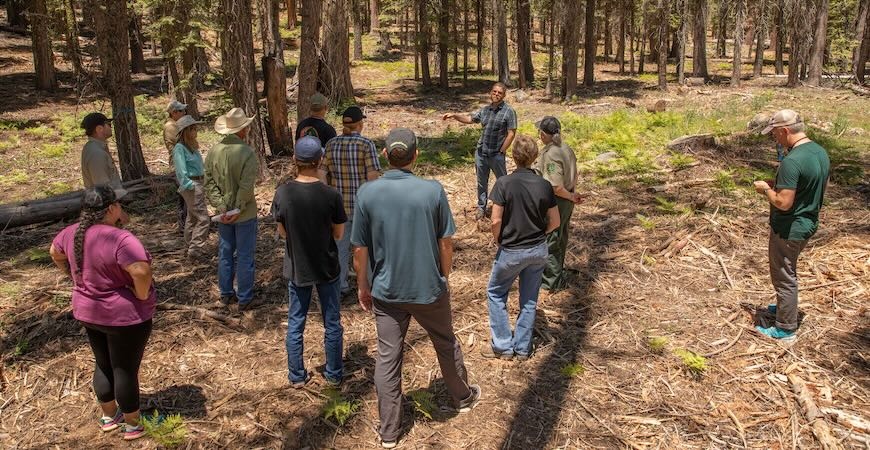
As wildfires grow in intensity and frequency, it's vital that agencies and local stakeholders work together to rehabilitate and restore resilience to wildlands in California.
This finding is underscored in a paper in the journal Restoration Ecology published in October by UC Merced researchers.
Across the western United States and elsewhere, stronger and more numerous wildland fires are projected in response to climate warming and high fuel loads, posing unprecedented challenges to natural-resource managers.
"Given resource constraints in the U.S. Forest Service and other federal agencies, these partnerships are central to advancing the pace and scale of landscape restoration, and especially carrying out fuel treatments to reduce wildfire severity across the state's wildlands," said co-author Safeeq Khan, professor of watershed science at UC Merced.
The researchers surveyed 144 wildland-management professionals in California and found that land-management and local agencies already had strong collaborations with other federal and state agencies. Survey respondents from tribes, universities, watershed-service providers, and private-sector organizations frequently reported collaboration with land-management and other public agencies. However, the respondents from public agencies did not report similar patterns of collaboration with those organizations.
Most survey respondents expressed interest in additional collaborations. Universities, land managers, watershed-service providers and private-sector organizations all indicated a strong desire to establish new collaborations.
The survey also revealed that the two most pressing barriers limiting effective wildland management were limited financial and personnel resources, with lack of public support and data being less common concerns.
"Our findings suggest that long-term collaborations targeting these three main barriers - financial and human capital plus regulatory processes - will maintain relevance in the future," said lead author Max Eriksson, a senior scientist at Klagenfurt University in Austria.
"These resource constraints are real, given recent costs of fuels treatments to reduce projected wildfire severity in forests averaging about $2,000 per acre, and the state's target of treating at least one million of its 25 million forested acres per year," said co-author and UC Merced civil and environmental Professor Roger Bales.
Also important, summed across different levels of government, regulations represent a third primary barrier, which could be even larger than money and personnel constraints.
"Through innovative partnerships, the USDA, Forest Service and state-agency partners are increasing the pace and scale of new project development and approvals for forest restoration," said JoAnna Lessard, Yuba Water Agency's watershed manager, who was not involved with the study. "However, regulatory barriers remain that are significantly impacting the implementation of these funded projects."
The current outsized risk of high-severity wildfire, which threatens infrastructure and a range of critical ecosystem services, is motivating formation of forest-restoration partnerships involving diverse groups of stakeholders across the sectors in this study. However, in many cases these collaborations have been slow to form.
Investments in nurturing formation of and supporting these partnerships can provide huge ecosystem-service benefits, support for local communities and resilience for wildland environments.
This is the third in a series of recent papers on public and resource-professional perspectives on forest restoration, based on research using interviews and surveys.



